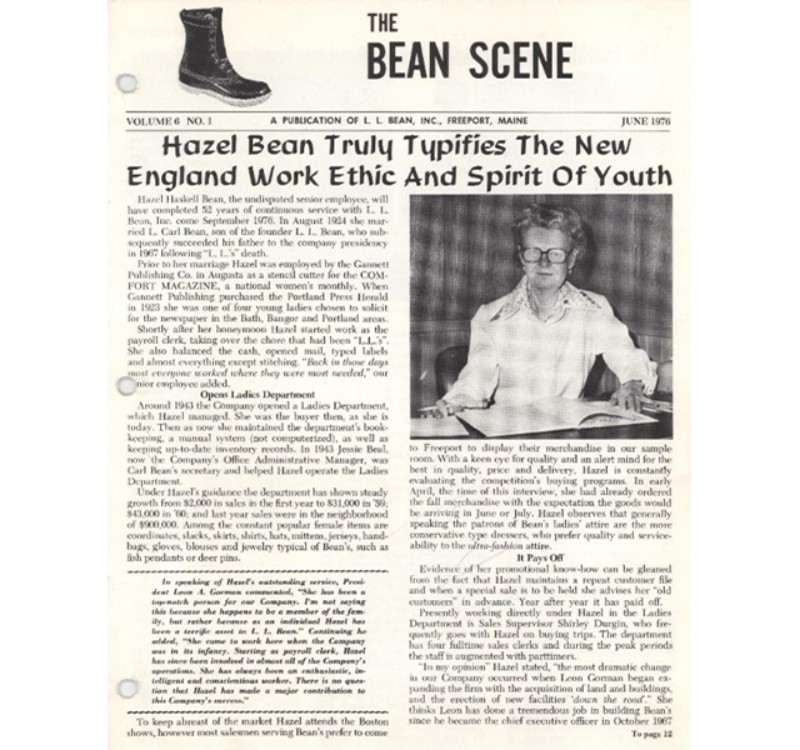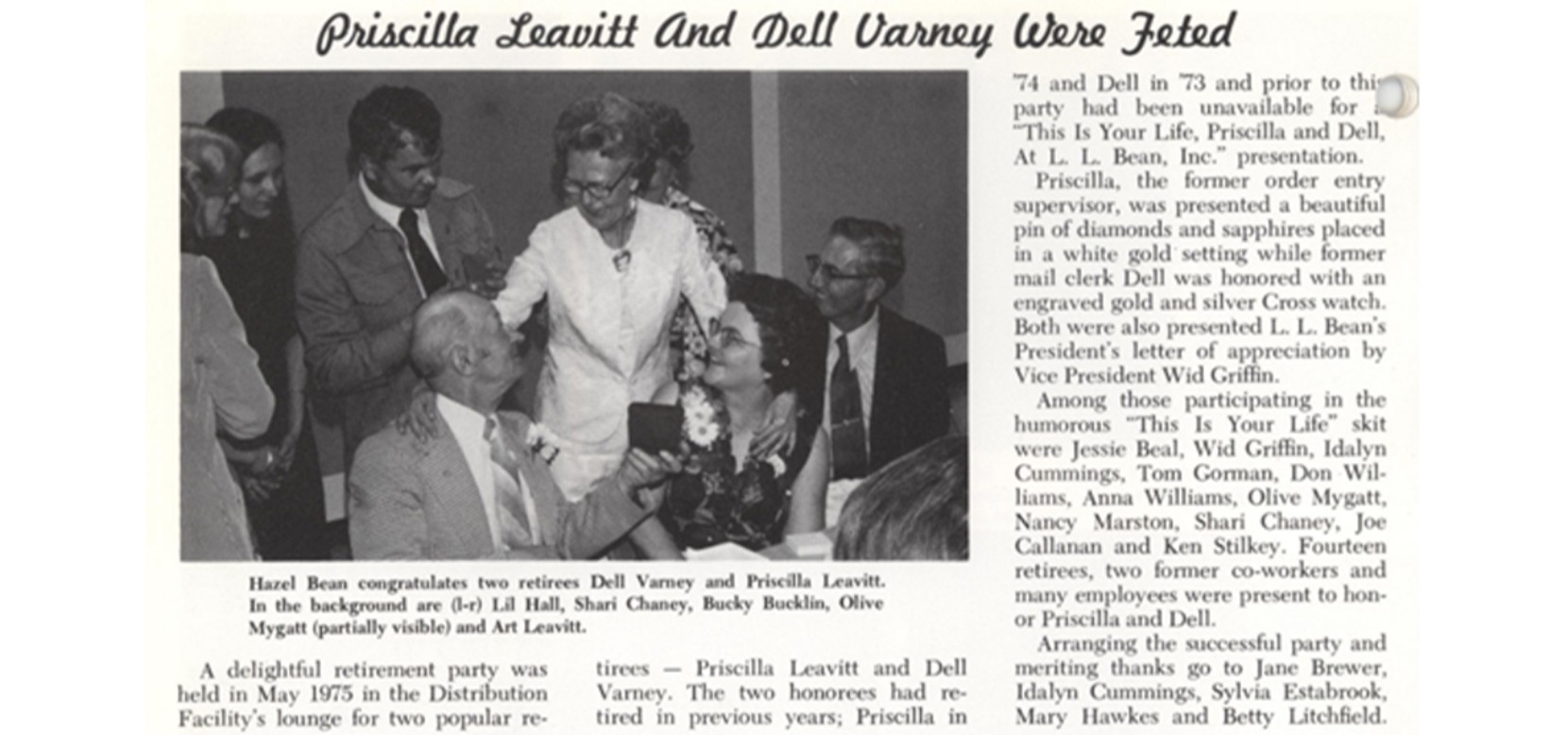The subject of women’s fashion in American history is more complex than clothes on a body. What women decided to wear – or were limited from wearing – typically took on outsized cultural significance. Fashion was tied to women’s professions, roles in the family and even their belief systems. From fighting to ditch hoop skirts in the 1800s to finding pants with proper pockets today, women have had to battle stigmas and prejudices for clothing that works.
This history has primarily played out through popular culture, from Marlene Dietrich donning menswear to Coco Chanel creating the two-piece suit. But what of the women in everyday America, working and living from coast to coast, creating their own fashion futures?
Those women were innovators, too, with stories that are rarely told. Here we shine a light on the women during the early days of L.L.Bean who were instrumental in creating a place for women in the outdoors – and in the outdoor business.
A Role to Play: Women Have Always Influenced Outdoor Apparel
Outdoor activities like, fishing, hunting and hiking might have been male dominated for the better part of American history, but that doesn’t mean women weren’t involved. Not only did women enjoy these activities, they also played a critical role in outfitting them. As sewing was largely considered the pinnacle of “women’s work” for years, many early businesswomen earned wages thanks to their sewing skills – which often resulted in broadening their career options.
Take our first and most iconic product, the Maine Hunting Shoe (commonly known as the Bean Boot). Many people know it was invented over 100 years ago by our founder, L. L. Bean, but few people know about the mother-daughter duo who played a key role in those early production years.
L. L. had recruited local shoemaker Ted Goldrup to cut the boots’ leather tops, but it was his wife and daughter Hazel who stitched those tops to the rubber bottoms. Additionally, Hazel would later marry L. L.’s son Carl, and went on to play a pivotal role in the family business that spanned five decades.
L. L. would later say of Hazel: “Miss Goldrup deserves more credit for the success of my mail order business, in the early years, than any other one person. She was the bookkeeper, cashier, auditor and boss of the office. When I went on my hunting trips, I never worried about the business.”
After 52 years, Hazel would retire, having taken on increasing duties within L.L.Bean. Like many women of her day, having gotten a foot-in-the-door through “women’s work,” she was able to redefine the nature of what that might mean.
The Women Pushing Womenswear for the Outdoors
The first Maine Hunting Shoe was available in 1912 and L.L.Bean was primarily focused on men’s attire in the beginning. Along the way, small steps were made, thanks to the appearance of a few women’s items in the L.L.Bean catalog in those early years. In 1935, a Ladies’ Ski and Hunting Suit debuted, and in 1950, Ladies’ Dungarees became available.
At the mid-century mark, when America’s working women rarely held leadership positions, their influence inside the L.L.Bean ecosystem was undeniable. In one story, L. L. wondered aloud why there weren’t more women’s items. Carlene Griffin, who worked for the company for 56 years, replied, “Because you don’t buy any!” And just like that, more women’s items were added.
After limited collections in the 1940s, an official women’s showroom opened in 1954 after L. L.’s wife, Claire Bean, and daughter-in-law, Hazel, convinced the founder that women needed something to do while their husbands shopped.
Together they partnered with a woman named Jesse Beal – an employee who would later become the company’s head of personnel – to create a showroom that often veered dramatically from the women’s offerings in the catalogs, that often mirrored men’s designs. In the mailer, women’s items essentially mirrored men’s items, but Hazel’s showroom featured apparel that was both functional and stylish.
This approach created a branding challenge for a company that was founded to provide items that can withstand brutal winters and that would serve as a trusted companion for the most rugged of outdoor adventures. In other words, the company’s main priority was not to look dapper around the fishing hole. Yet, as a merchant far ahead of his time, L. L. recognized that while the women’s market might have different priorities as compared to its male counterpart, it was a market worth investing in. L. L. is quoted as saying, “A woman is different. When she goes to the beach, she wants to dress for the beach. When she goes dancing, she wants to be dressed for dancing. When she goes fishing, she wants to be dressed for fishing. There is a great future in this for us and something that the style people will give some attention to if they are smart.”
Sure enough, his own style people, especially the women of L.L.Bean, were paying attention – a measure that would pay off in dividends.
A Legacy that Endures – and Improves
As the ‘70s arrived, bringing with it seismic shifts in the political and social forces that affected women and people of color, changes came within L.L.Bean as well. Catalogs increasingly included more women’s items and apparel that straddled the bridge between fashion and function. And, as women represented more positions in the workforce, shopping via catalog became an expedient and easy choice for families on-the-go.
Ethel Williams, who spent 38 years with the company, not only ran the company’s advertising, but helped produce the catalog. Her work, combined with the work of others like Hazel Bean and Jesse Beal, catapulted the business into new heights. According to a 1971 New York Times story detailing the boom of mail-order shopping, Williams was presiding over the distribution of 750,000 catalogs while the company brought in $6 million in sales.
Soon, many of the women who played foundational roles in the company’s first half century were reaching retirement age. Stories from the internal newsletter “Bean Scene” in the 1970s mentioned woman after woman who retired after working decades in the company, rising in the ranks and each contributing to the culture of the beloved L.L.Bean we know today – from the fan-favorite Christmas Catalog to items like the Women’s Fair Isle Shetland Sweater and the iterations that followed it.
In 1975, a quarter of L.L.Bean’s customers were women. By the 1980s, women comprised half of the customer base. In the years since, L.L.Bean has continued to improve and evolve, with the help of an increasingly representative and diverse staff, including a leadership team comprised of 50% female executives. These gains have helped us to provide women – all women – with clothing that works for them. From expanding our sizing assortment to creating gear that helps women better explore the outdoors, the fusion of style and function is now the core of the L.L.Bean brand.






